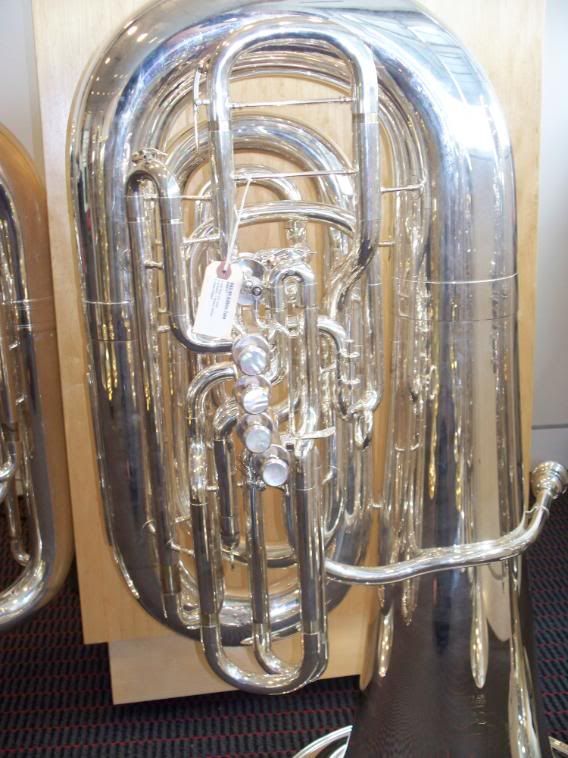Well, I agree that it was a really good copy of the CSO York but I can't agree that it was worth $30,000. I think for that much money, the low register should have the response of a 4/4 horn and it doesn't. As with the CSO tuba, the low register is the least responsive range. Yamaha got one thing right, the CSO York isn't a heavy tuba and there's no reason to start using thicker brass. It is a terrific instrument but I think there are tubas that will do the same job and cost a lot less.THE TUBA wrote:It...
The YamaYork is amazing, simply amazing. I didn't think a tuba could be worth $30,000, but I would gladly pay every penny (if, of course, I had that kind of dough to throw around). The response is phenomenal, the sound amazing, the "blow" unbelievable. It is even easy to hold compared to many of the other BATs. AND it doesn't break your legs to play, like the big Willson contrabasses.
All this said so that a young tubist somewhere doesn't spend his days thinking "Gee, if I could just get a Yamaha-York..." There are other, valid options.
I am not a M-W fan, but I felt like the Baer CC was equal in pitch, response and intonation, though it didn't pretend to try to sound like a York.
I've been fortunate to have owned some fine 6/4 tubas. Each was a match for the Yamaha-York in some ways; the main difference between the horns was the end product:
- The Holton was a bit on the raw side, perfect for the orchestra, bad for the audition.
The Nirschl is a great copy, individual instruments vary greatly.
The Yorkburnner has the best low register of the bunch (at least the one I play does) and is the most overall consistant model produced.
Would I buy the M-W Baer version if I had the money? Maybe, if I was playing in a top-ten orchestra didn't have a suitable 6/4. I don't hear a $10,000 difference.
I think I would see if there was a great Nirschl floating around or wait for the Miraphone 6/4 piston CC (the prototype at Mid-West was terrific).
The sheer number of models that Meinl Weston produces is mind numbing. Pyschologists have found that, as the number of choices increase, the ability to make a final product decision becomes less likely. I think Meinl may be at that point. They must make 10 or 12 F tuba models.
Sam Gnagey's horns were fun to play and amagingly consistant. They fall right in-between the instruments I now play and I couldn't find a need to buy one but they are definitely worth considering for someone. I wish the cosmetics were a little better but it is what it is.
Miraphone makes a consistant, dependable product. Every so often they come up with an outstanding instrument; I believe that the prototype F tuba is one of those. If you can't play it successfully in an orchestra, then something is terribly wrong.







